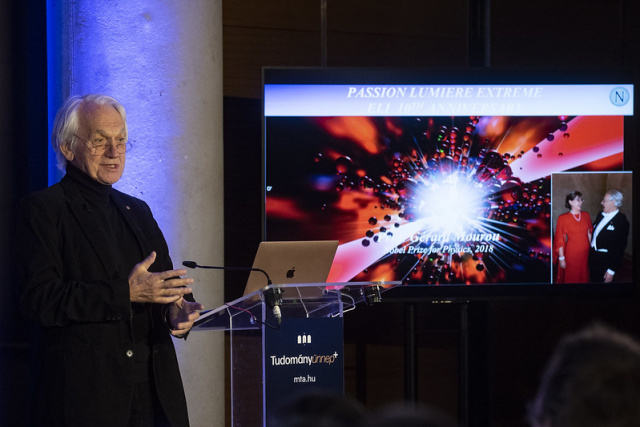Extreme light pulses in the service of science and society – Nobel Laureate Gerard Mourou’s lecture in English on video
Extreme laser pulses provide researchers with a general tool to produce high-energy radiation and particles, and to generate high field strength, high pressure, temperature and acceleration. They can help us to answer still unanswered questions in physics, such as the origin of cosmic rays with energies greater than 10²º eV or the loss of information in black holes. The French researcher also spoke about this in his Science Day lecture.
The use of particle acceleration with lasers, as Nobel Prize winner Gerard Mourou said in his presentation, will make it possible to study many of these fundamental questions in the laboratory. In addition, extreme light pulses also provide a way to examine the structure of the vacuum and the particles produced in “empty” space, which is one of the fundamental objectives of the field. This method can also be used to study basic quantum electrodynamics processes and even quantum colour dynamics processes.
In his presentation in English, the Nobel Prize-winning physicist outlined a concept which looks beyond the currently available intensity range to produce high-energy, coherent attosecond-to-zeptosecond light pulses in the X-ray range. This takes us beyond the Schwinger limit into the zetawatt, PeV energy range, opening up a new chapter in the study of laser-matter interaction.
Gerard Mourou obtained his PhD in France in 1973. He was founding director of the Center for Ultrafast Optical Science at the University of Michigan in 1990, and then director of the Optical Laboratory of L’École Nationale Supérieure de Techniques Avancées (ENSTA) in Paris from 2005 to 2009. He is currently Professor Emeritus at the University of Michigan. In 2018, he and former PhD student Donna Strickland were awarded the Nobel Prize in Physics for their work on phase-modulated pulse amplification.




